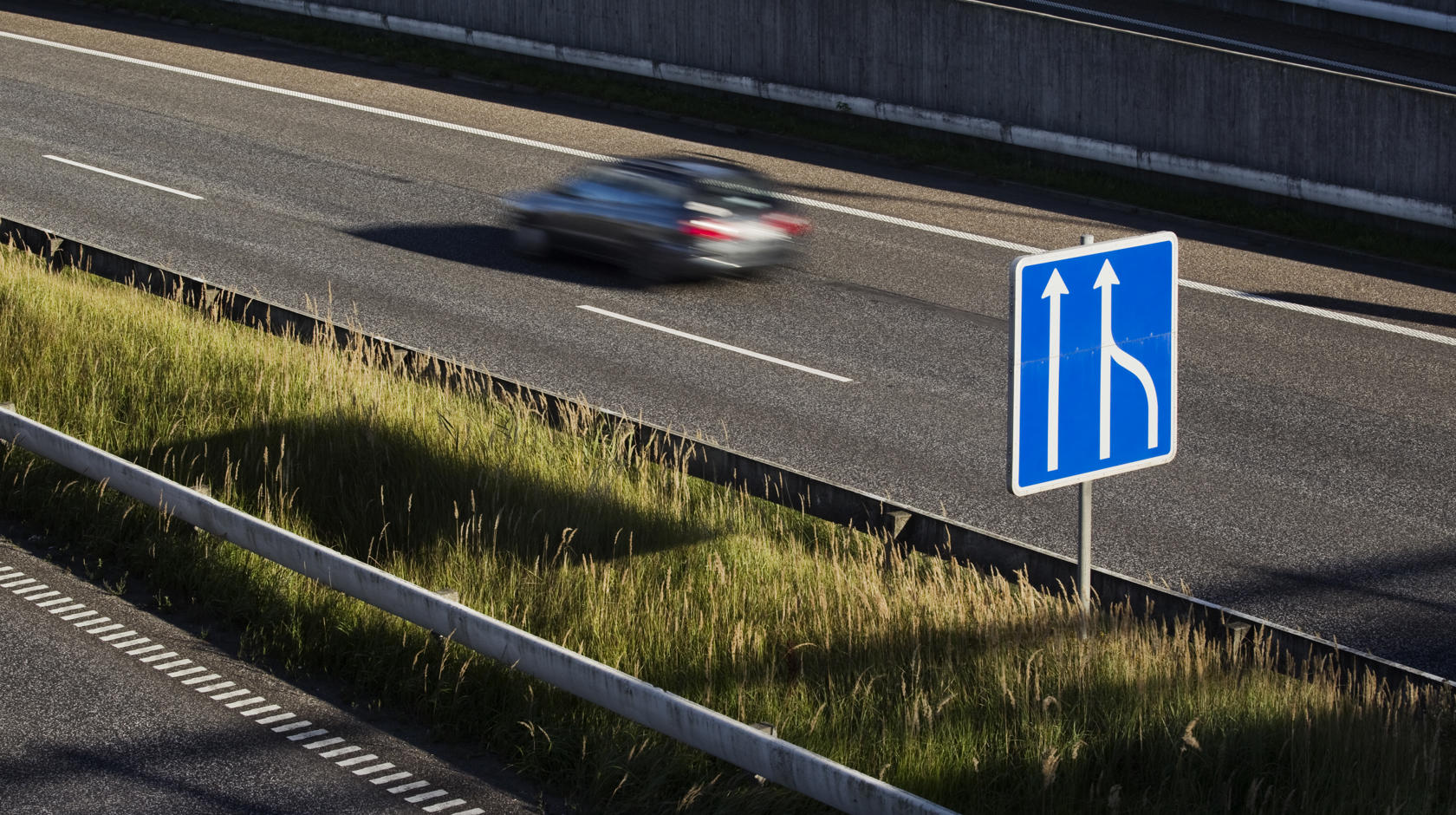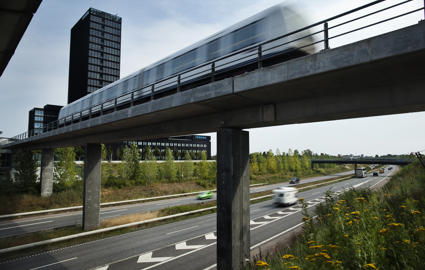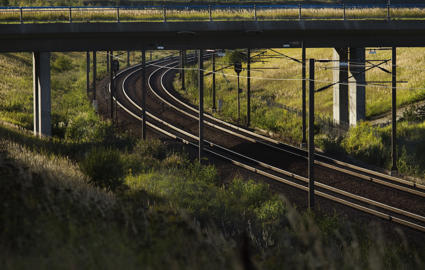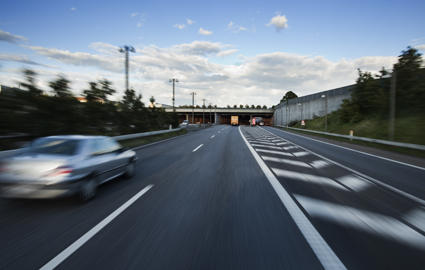The Øresund link
The motorway and the railway across Amager to Copenhagen Airport and the Øresund Bridge are, despite the relatively short distance, one of the most important traffic connections in Denmark.
The Øresund Bridge
The Øresund Bridge was inaugurated on 1 July 2000 and is a combined bridge and tunnel link between Denmark and Sweden, more specifically between Amager and Skåne. The link consists of the Øresund tunnel between Amager (near Kastrup south of Copenhagen) and the artificial island Peberholm (south of Saltholm) as well as the Øresund bridge, a combined girder and cable-stayed bridge between Peberholm and Lernacken (south of Malmö) in Scania. The link consists of a motorway and a double railway track. The total length of the link is 15.9 km.
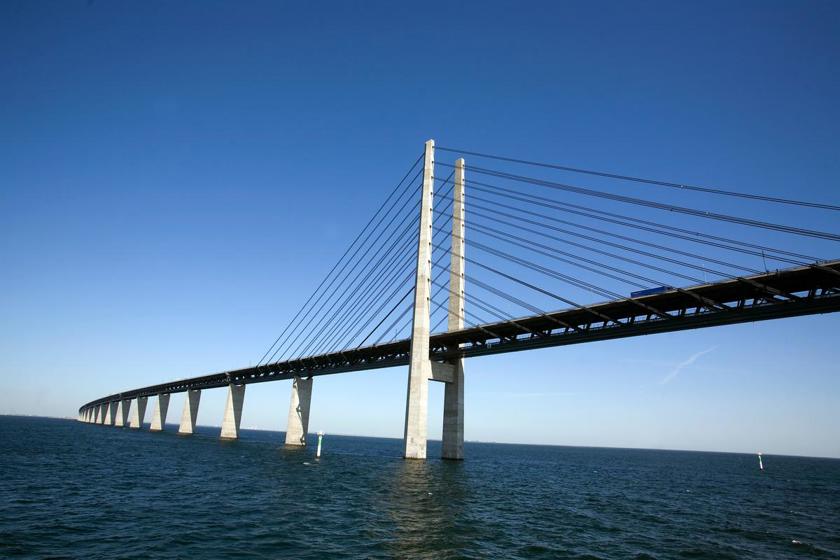
Facts about the link
Bridge
Bridge
The bridge consists of two low-level approach bridges and a high-level cable-stayed bridge across the Flintrännan channel. With its 490 meter long free span, the high-level bridge is the world's longest cable-stayed bridge for both motorway and railway. The high bridge is a simple and strong lattice bridge with tall, sky-high, stylish pylons. The cable stays are part of a clean and well-balanced pattern with generally equal angles towards the pylons.
The stays are located outside the bridge deck and are thus secured against collisions. The cable stays are parallel and symmetrical around the pylon towers, thus receiving an evenly distributed load. As the cable stays become invisible in certain light and weather conditions, the pylons are the most prominent parts of the link. The pylons appear as four monumental towers.
The dimensions of the towers are reduced from the sea surface and upwards, which increases the feeling of strength and stability. The slope of the inside of the pylons is adjusted so that the individual towers do not give the impression of tilting inwards. All visible concrete parts; pylon towers, bridge piers, motorway deck, railway troughs and bridge supports appear in a warm, gray concrete. The lattice structure that carries the road and rail is painted black. All equipment is made of galvanized steel. The cable stays are protected by black polyester tubes. At night, the bridge is marked for sailing and flying. The pylon towers have floodlights and the street lighting is seen as a luminous pearl chain that draws the course of the bridge.
Tunnel
Tunnel
The Øresund tunnel is made of precast of tunnel elements, that are lowered and placed in extension of each other under the Drogden channel.
Seen from above, both tunnel entrances point towards each other and clearly mark the intermediate tunnel. The tunnel has white walls and lighting in two rows. The choice of light and colours aims to create the best possible conditions for road users.
The entrances to the two motorway tubes have light filters in the roof to give motorists a smooth transition between daylight and the electric light in the tunnel. The entrances to the two railway tubes have air shafts in the roof to reduce the pressure shock that occurs when the trains at the entrance presses the air in the tunnel together.
Railway
Railway
The Øresund Bridge's two-track railway has a direct connection to the Danish and Swedish railway networks in Kastrup and Lernacken, respectively. The railway line between Copenhagen Airport, Kastrup and Lernacken on the Swedish coast is managed by
Øresundsbro Konsortiet. Railway operators may be granted a permit to run on the Øresund link, provided that they have a declaration of conformity for the Danish system part and "track consent" for the Swedish system part.
Peberholm
Peberholm
The artificial island Peberholm is built of sand, clay, stone and lime, which was picked up from the bottom of the Øresund during the excavation of the trench for the tunnel and the bridge piers. At Peberholm, the motorway and the railway change course between the bridge, where they run on two floors, and to the tunnel, where they run in parallel in the same level.
The contours of the island, with the concave lines and rounded corners, are the result of several factors. On the one hand, the island must not slow down the water flow in the Øresund and on the other hand, the island must harmonize with the alignment of the motorway, which forms a weak S-curve over the island.
The coastal protection is built of quarry stone from the Swedish west coast and appears in a colour varying from light to dark gray. The largest rocks are located on the southern, western and eastern parts to protect against strong waves and ice masses. In the northern part facing Saltholm, the stones are considerably smaller.
Toll station
Toll station
The Øresund Bridge's toll station is located at Lernacken outside Malmö, on the Swedish side of the Øresund. The toll plaza is part of the Lernacken Operations Center, which in addition to the administration buildings also contains the Øresund Bridge's traffic monitoring centre. The operations centre is responsible for staffing the toll booth as well as monitoring road traffic and technical systems.
The Danish landworks
The motorway
The Øresund motorway is 9 km long and is an extension of the E20 motorway from Vestamager to the Øresund link's tunnel via Copenhagen Airport in Kastrup.
A ramp system has been established in Ørestad, at Englandsvej in Tårnby and Airport West and Airport East. The Øresund line consists of a railway line for passenger and freight trains of a total of 18 km. The railway connects Copenhagen Central Station with Copenhagen Airport.
At the Kalvebodløbet between Zealand and Amager, an approximately 4 km long railway line forms a connection to Ny Ellebjerg.
In Kastrup, a separate track and a turning track of a total of 2 km have been established. Stations have been established on the Øresund line in Ørestad, Tårnby and Kastrup
Railway
The Øresund line consists of approximately 6.2 km of railway, which today is primarily used for freight. Further, the line consists of approximately 12 km of railway for passenger trains from Copenhagen Central Station to the Øresund coast and approx. 4.2 km railway from Vigerslev to Kalvebodløbet and approx. 2 km railway north of the airport hangar area up to the artificial peninsula. So far, the latter two railway lines have primarily been used by freight trains to avoid running freight trains via Copenhagen Central Station and the station at the airport, respectively, but they are equipped like the rest of the railway line.
Train stations
Of the three stations on the Øresund line, Sund & Bælt owns Tårnby Station and Copenhagen Airport Station, which is one of Denmark's busiest stations.
